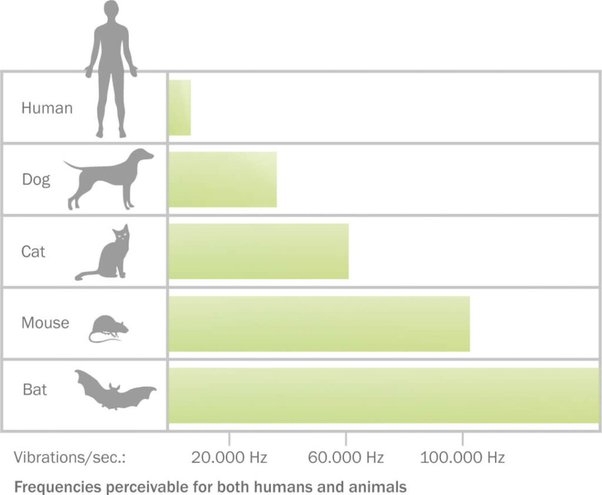Your dog perks up at a seemingly silent rustle, or your cat seems captivated by an empty corner, ever wonder why?
Humans, Dogs, and Cats,
and Mice
and Bats
Before we go any further, let’s establish some ground rules. Amplitude determines loudness, with decibels (dB) measuring its punch. Frequency dictates pitch, where a high-pitched whistle soars at thousands of hertz (Hz), while a deep bass rumbles at mere dozens.

That’s right … It’s all about the FREQUENCY!
Human Ears: Good, but not Great
Our hearing range spans 20-20,000 Hz, with sensitivities peaking around 1-2 kHz (those mid-range conversations!). We can detect whispers around 30 dB, while a quiet pin drop whispers at 20 dB.
Dogs: Masters of High-Pitch
These furry friends boast a range of 40-60,000 Hz, nearly triple ours! Their superior high-frequency perception allows them to hear rustling leaves (-10 dB) and those annoying dog whistles (50 dB). They can even pinpoint sound sources four times farther than us!
Cats: Kings (and Queens) of the Sound Jungle
Our cats rule with a staggering 55-79,000 Hz range. Sensitive to mid-range frequencies (500 Hz-32 kHz), they can detect a mouse’s squeak (-20 dB) and even the ultrasonic calls of bats!
Dogs, however, can hear frequencies as high as 40,000 hertz, and can detect a sound at 4 times the distance compared with people. Cats, even more amazingly, can hear sound frequencies as high as 64,000 hertz. And not only are our pet able to her sounds we cannot, they react to sound differently.
Here are some interesting facts about the frequency of human voices:
- Singers: Trained singers can extend their vocal range significantly, reaching notes far beyond the average person’s capabilities. Some opera singers can even hit notes as high as 1,500 Hz!
- Emotions: The frequency of our voice can also change depending on our emotions. For example, when we’re happy or excited, our voices tend to rise in pitch. Conversely, when we’re sad or angry, our voices may become lower and more monotone.
- Technology: Understanding the frequency of human voice is important for various technologies, such as speech recognition software and voice compression algorithms used in telecommunications.
https://www.mnn.org/blog/basics-sound-what-are-frequency-and-amplitude